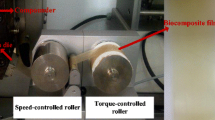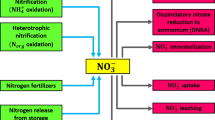Abstract
Purpose
The aim of this work is the evaluation and minimization, using a life cycle assessment approach, of the environmental impacts of starch aerogel production on different scale plants. Aerogels are porous structures, which can be used as carriers for delivery systems; they are obtained through a supercritical drying. The impacts related to the production of 1 g of starch aerogel on two different scales (vessel internal volumes equal to 0.5 and 5.2 L) were evaluated and compared. The environmental impacts on an industrial scale plant were also simulated.
Methods
All the quantities related to materials, energy consumption and emissions to air, soil and water were reported to the chosen functional unit (1 g of starch aerogel obtained on bench or pilot scale plant). Data were analysed using SimaPro 8.0.5 software, whereas the Ecoinvent 3.1 database and primary data were used for the life cycle inventory, according to the reference standard for LCA (i.e., ISO 14040-14044). A detailed analysis, following a gate-to-gate approach to quantify the emissions at plant level, which are generalizable for all polysaccharides’ aerogel productions, was performed. In order to complete the study, the results of a cradle-to-gate analysis, quantifying the emissions at overall level, which are complete but related only to corn starch aerogel production, were also proposed. The IMPACT 2002+ method was used to evaluate the effect of the production on the midpoint and damage impact categories.
Results and discussion
Scaling-up the starch aerogel production from bench to pilot scale induced a substantial reduction of the impacts on all the categories. On both scales, the analysis made using midpoint categories showed that supercritical drying step strongly affected carcinogens and mineral extraction, whereas alcogel production step strongly affected respiratory organics. Solutions aimed at minimizing these impacts were proposed. The performed analysis, using both midpoint and endpoint categories, allowed to identify the aerogel production weak points and propose improved solutions.
Conclusions
Global emissions related to starch aerogel production were lowered passing from bench scale to pilot scale. By using damage categories, it was possible to quantify a global reduction of 40% of the emissions on human health, climate change, ecosystem quality and resources. The simulation on industrial scale led to a total reduction of 82% of the damage with respect to pilot scale plant and of 95% with respect to bench scale plant.





Similar content being viewed by others
Abbreviations
- AA:
-
Aquatic acidification
- AE:
-
Aquatic eutrophication
- AET:
-
Aquatic ecotoxicity
- C:
-
Carcinogens
- DALY:
-
Disability adjusted life years
- DD:
-
Drum drying based technique
- FU:
-
Functional unit
- GWP:
-
Global warming potential
- ICAM:
-
Integrated computer aided manufacturing
- IDEF:
-
Icam def for function modelling
- IR:
-
Ionizing radiations
- LCA:
-
Life cycle assessment
- LCI:
-
Life cycle inventory
- LO:
-
Land occupation
- MD:
-
Multistage drying based technique
- ME:
-
Mineral extraction
- NC:
-
Non-carcinogens
- NRE:
-
Non-renewable energy consumption
- OLD:
-
Ozone layer depletion
- PDF:
-
Potentially disappeared fraction of species
- RI:
-
Respiratory inorganics
- RO:
-
Respiratory inorganics
- TAN:
-
Terrestrial acidification/nitrification
- TET:
-
Terrestrial ecotoxicity
References
Allen TM, Cullis PR (2004) Drug delivery systems: entering the mainstream. Science 303:1818–1822
Baldino L, Concilio S, Cardea S, Reverchon E (2016) Interpenetration of natural polymer aerogels by supercritical drying. Polymers 8(4):106
Burgess AA, Brennan DJ (2001) Application of life cycle assessment to chemical processes. Chem Eng Sci 56:2589–2604
Caputo G, Scognamiglio M, De Marco I (2012) Nimesulide adsorbed on silica aerogel using supercritical carbon dioxide. Chem Eng Res Des 90:1082–1089
Cardea S, Baldino L, De Marco I, Pisanti P, Reverchon E (2013) Supercritical gel drying of polymeric hydrogels for tissue engineering applications. Chem Eng Trans 32:1123–1128
Dahan A, Hoffman A (2008) Rationalizing the selection of oral lipid based drug delivery systems by an in vitro dynamic lipolysis model for improved oral bioavailability of poorly water soluble drugs. J Control Release 129:1–10
De Marco I, Iannone R (2017) Production, packaging and preservation of semi-finished apricots: a comparative life cycle assessment study. J Food Eng 206:106–117
De Marco I, Reverchon E (2017) Starch aerogel loaded with poorly water-soluble vitamins through supercritical CO2 adsorption. Chem Eng Res Des 119:221–230
De Marco I, Baldino L, Cardea S, Reverchon E (2015a) Supercritical gel drying for the production of starch aerogels for delivery systems. Chem Eng Trans 43:307–312
De Marco I, Miranda S, Riemma S, Iannone R (2015b) Environmental assessment of drying methods for the production of apple powders. Int J Life Cycle Assess 20:1659–1672
De Marco I, Miranda S, Riemma S, Iannone R (2016) LCA of starch aerogels for biomedical applications. Chem Eng Trans 49:319–324
De Soete W, Debaveye S, De Meester S, Van der Vorst G, Aelterman W, Heirman B, Cappuyns P, Dewulf J (2014) Environmental sustainability assessments of pharmaceuticals: an emerging need for simplification in life cycle assessments. Environ Sci Technol 48:12247–12255
Dowson M, Grogan M, Birks T, Harrison D, Craig S (2012) Streamlined life cycle assessment of transparent silica aerogel made by supercritical drying. Appl Energ 97:396–404
Fera M, Iannone R, Macchiaroli R, Miranda S, Schiraldi MM (2014) Project appraisal for small and medium size wind energy installation: the Italian wind energy policy effects. Energy Policy 74:621–631
Finnveden G, Hauschild MZ, Ekvall T, Guinée J, Heijungs R, Hellweg S, Koehler A, Pennington D, Suh S (2009) Recent developments in life cycle assessment. J Environ Manag 91:1–21
García-González C, Smirnova I (2013) Use of supercritical fluid technology for the production of tailor-made aerogel particles for delivery systems. J Supercrit Fluids 79:152–158
García-González C, Alnaief M, Smirnova I (2011) Polysaccharide-based aerogels—promising biodegradable carriers for drug delivery systems. Carbohyd Polym 86:1425–1438
Gazulla C, Raugei M, Fullana-I-Palmer P (2010) Taking a life cycle look at crianza wine production in Spain: where are the bottlenecks? Int J Life Cycle Assess 15:330–337
Glenn GM, Stern DJ (1999) Starch-based microcellular foams. US5958589 A
Gómez-Galván F, Pérez-Álvarez L, Matas J, Álvarez-Bautista A, Poejo J, Duarte CM, Ruiz-Rubio L, Vila-Vilela JL, León LM (2016) Preparation and characterization of soluble branched ionic β-cyclodextrins and their inclusion complexes with triclosan. Carbohyd Polym 142:149–157
González-García S, Dias AC, Clermidy S, Benoist A, Bellon Maurel V, Gasol CM, Gabarrell X, Arroja L (2014) Comparative environmental and energy profiles of potential bioenergy production chains in Southern Europe. J Clean Prod 76:42–54
Horcajada P, Serre C, Maurin G, Ramsahye NA, Balas F, Vallet-Regi M, Sebban M, Taulelle F, Férey G (2008) Flexible porous metal-organic frameworks for a controlled drug delivery. J Am Chem Soc 130:6774–6780
Iannone R, Miranda S, Riemma S, De Marco I (2014) Life cycle assessment of red and white wines production in southern Italy. Chem Eng Trans 39:595–600
Iannone R, Miranda S, Riemma S, De Marco I (2016) Improving environmental performances in wine production by a life cycle assessment analysis. J Clean Prod 111:172–180
Jiménez-González C, Curzons AD, Constable DJC, Cunningham VL (2004) Cradle-to-gate life cycle inventory and assessment of pharmaceutical compounds. Int J Life Cycle Assess 9:114–121
Jolliet O, Margni M, Charles R, Humbert S, Payet J, Rebitzer G, Rosenbaum R (2003) IMPACT 2002+: a new life cycle impact assessment methodology. Int J Life Cycle Assess 8:324
Landry KA, Boyer TH (2016) Life cycle assessment and costing of urine source separation: focus on nonsteroidal anti-inflammatory drug removal. Water Res 105:487–495
Lardon L, Hélias A, Sialve B, Steyer JP, Bernard O (2009) Life-cycle assessment of biodiesel production from microalgae. Environ Sci Technol 43:6475–6481
Lijó L, González-García S, Bacenetti J, Negri M, Fiala M, Feijoo G, Moreira MT (2015) Environmental assessment of farm-scaled anaerobic co-digestion for bioenergy production. Waste Manag 41:50–59
Malafaya PB, Stappers F, Reis RL (2006) Starch-based microspheres produced by emulsion crosslinking with a potential media dependent responsive behavior to be used as drug delivery carriers. J Mater Sci-Mater M 17:371–377
McAlister S, Ou Y, Neff E, Hapgood K, Story D, Mealey P, McGain F (2016) The environmental footprint of morphine: a life cycle assessment from opium poppy farming to the packaged drug. BMJ Open 6:1–9
Mehling T, Smirnova I, Guenther U, Neubert R (2009) Polysaccharide-based aerogels as drug carriers. J Non-Cryst Solids 355:2472–2479
Pantić M, Knez Ž, Novak Z (2016) Supercritical impregnation as a feasible technique for entrapment of fat-soluble vitamins into alginate aerogels. J Non-Cryst Solids 432(B):519–526
Pehnt M (2006) Dynamic life cycle assessment (LCA) of renewable energy technologies. Renew Energ 31:55–71
Prosapio V, Reverchon E, De Marco I (2016) Formation of PVP/nimesulide microspheres by supercritical antisolvent coprecipitation. J Supercrit Fluids 118:19–26
Saffari M, Ebrahimi A, Langrish T (2016) A novel formulation for solubility and content uniformity enhancement of poorly water-soluble drugs using highly-porous mannitol. Eur J Pharm Sci 83:52–61
Sherman J, Le C, Lamers V, Eckelman M (2012) Life cycle greenhouse gas emissions of anesthetic drugs. Anesth Analg 114:1086–1090
Smirnova I, Mamic J, Arlt W (2003) Adsorption of drugs on silica aerogels. Langmuir 19:8521–8525
Smirnova I, Suttiruengwong S, Arlt W (2004) Feasibility study of hydrophilic and hydrophobic silica aerogels as drug delivery systems. J Non-Cryst Solids 350:54–60
Thombre A, Cardinal J, DeNoto A, Herbig S, Smith K (1999) Asymmetric membrane capsules for osmotic drug delivery. I. Development of a manufacturing process. J Control Release 57:55–64
Ulker Z, Erkey C (2014) An emerging platform for drug delivery: aerogel based systems. J Control Release 177:51–63
Wernet G, Conradt S, Isenring HP, Jiménez-González C, Hungerbühler K (2010) Life cycle assessment of fine chemical production: a case study of pharmaceutical synthesis. Int J Life Cycle Assess 15:294–303
Zhao D, Tan S, Yuan D, Lu W, Rezenom YH, Jiang H, Wang LQ, Zhou HC (2011) Surface functionalization of porous coordination nanocages via click chemistry and their application in drug delivery. Adv Mater 23:90–93
Author information
Authors and Affiliations
Corresponding author
Additional information
Responsible editor: Melissa Bilec
Rights and permissions
About this article
Cite this article
De Marco, I., Iannone, R., Miranda, S. et al. An environmental study on starch aerogel for drug delivery applications: effect of plant scale-up. Int J Life Cycle Assess 23, 1228–1239 (2018). https://doi.org/10.1007/s11367-017-1351-6
Received:
Accepted:
Published:
Issue Date:
DOI: https://doi.org/10.1007/s11367-017-1351-6




